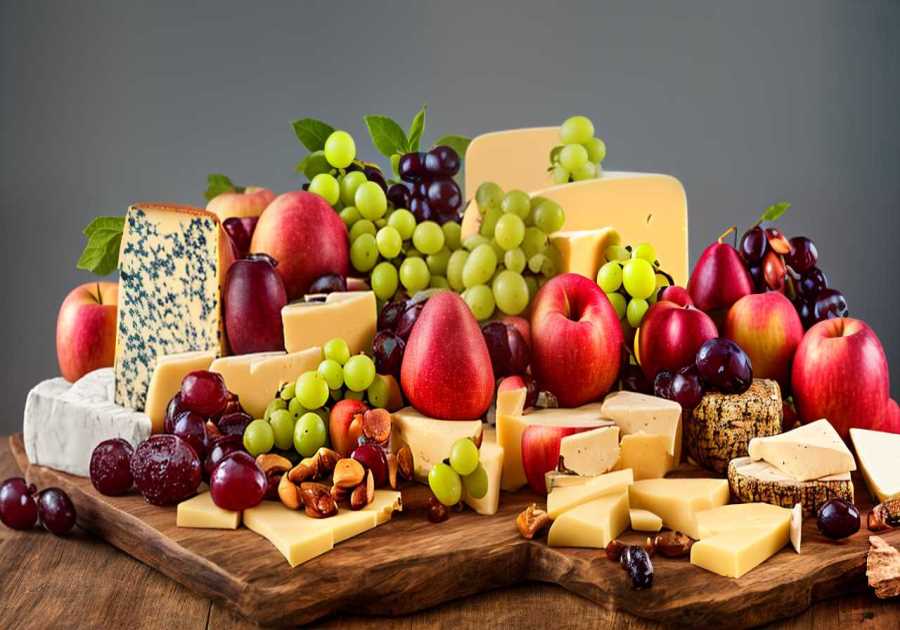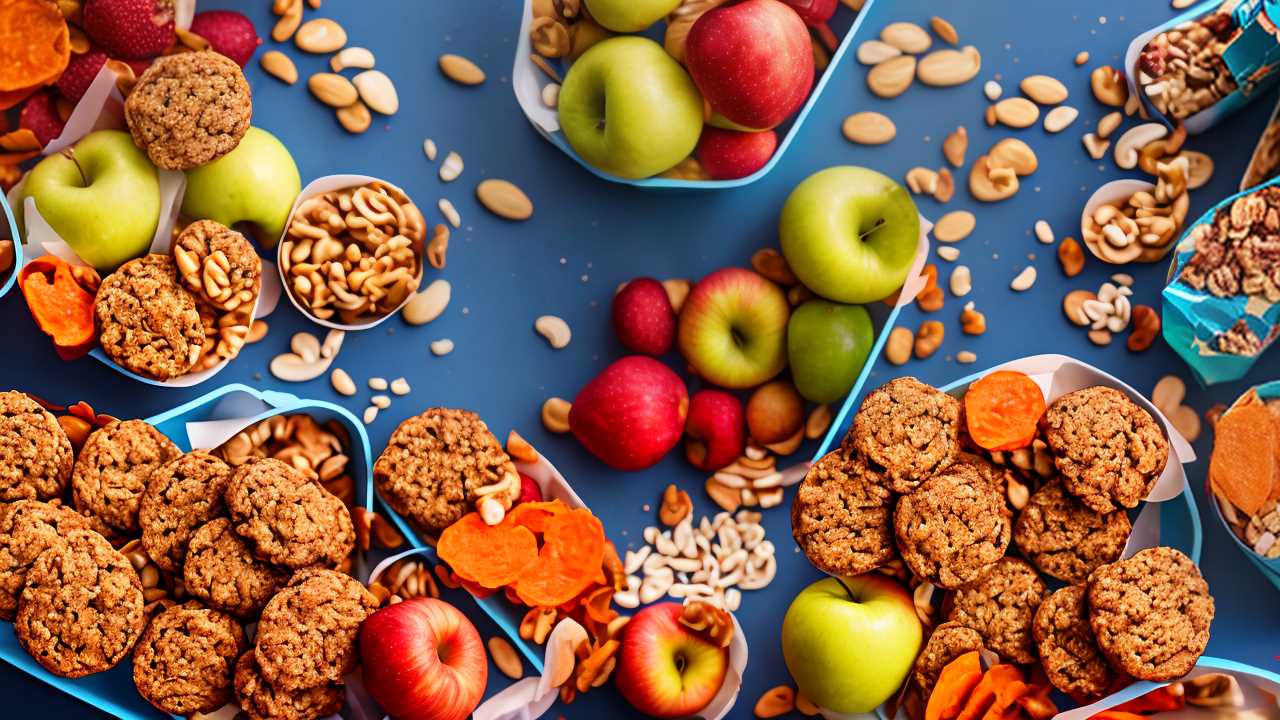
What Snacks to Send to School?
When you're packing snacks for school, focus on nutrient-dense options like fresh fruits, veggies, nuts, and whole grains to keep your child energized and focused. Opt for simple, homemade snacks such as apple slices with almond butter or mixed berries for a quick dose of vitamins and fiber. Don't forget to consider portion control to prevent overeating and energy crashes. It's also crucial to be mindful of any allergies; always check labels and communicate with the school about their snack policies. For colder months, think about warm options like vegetable soup or roasted sweet potatoes. Exploring more about these choices can help ensure your snacks are both delicious and nutritious.

Assessing Nutritional Value
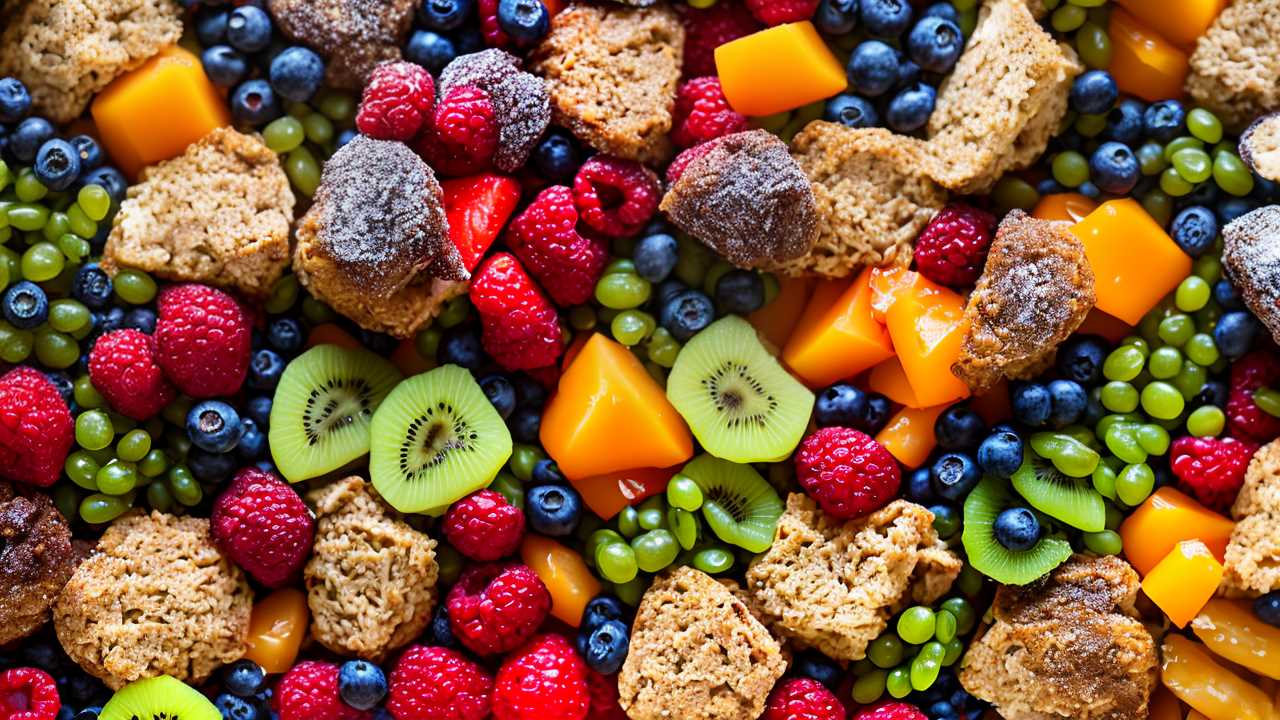
When choosing snacks to send to school, it's crucial to assess their nutritional value to ensure they contribute positively to your child's health and energy levels. You want snacks that not only taste good but also fuel growth and learning. This means focusing on nutrient density and portion control to optimize both health benefits and satisfaction.
Nutrient-dense snacks pack a lot of vitamins, minerals, fiber, and other beneficial compounds into each bite without unnecessary calories. Think whole fruits, vegetables, nuts, and whole grains. These foods provide the essentials your child needs to stay focused and energetic throughout the day. For instance, an apple with a small handful of almonds offers a great mix of carbohydrates, protein, and healthy fats, all of which are critical for cognitive function and physical health.
Additionally, incorporating keto-friendly options like cheese or meat-and-cheese roll-ups can provide lasting energy with minimal carbs, which is great for maintaining steady blood sugar levels.
Portion control is equally important. It's easy to overeat healthy snacks if they're not portioned correctly. Pre-packaged or pre-measured snacks can help manage portion sizes and ensure your child isn't consuming too many calories.
This practice not only teaches them about healthy eating habits but also helps to regulate their energy levels and prevent the spikes and crashes that can come from too much sugar or overly large portions.
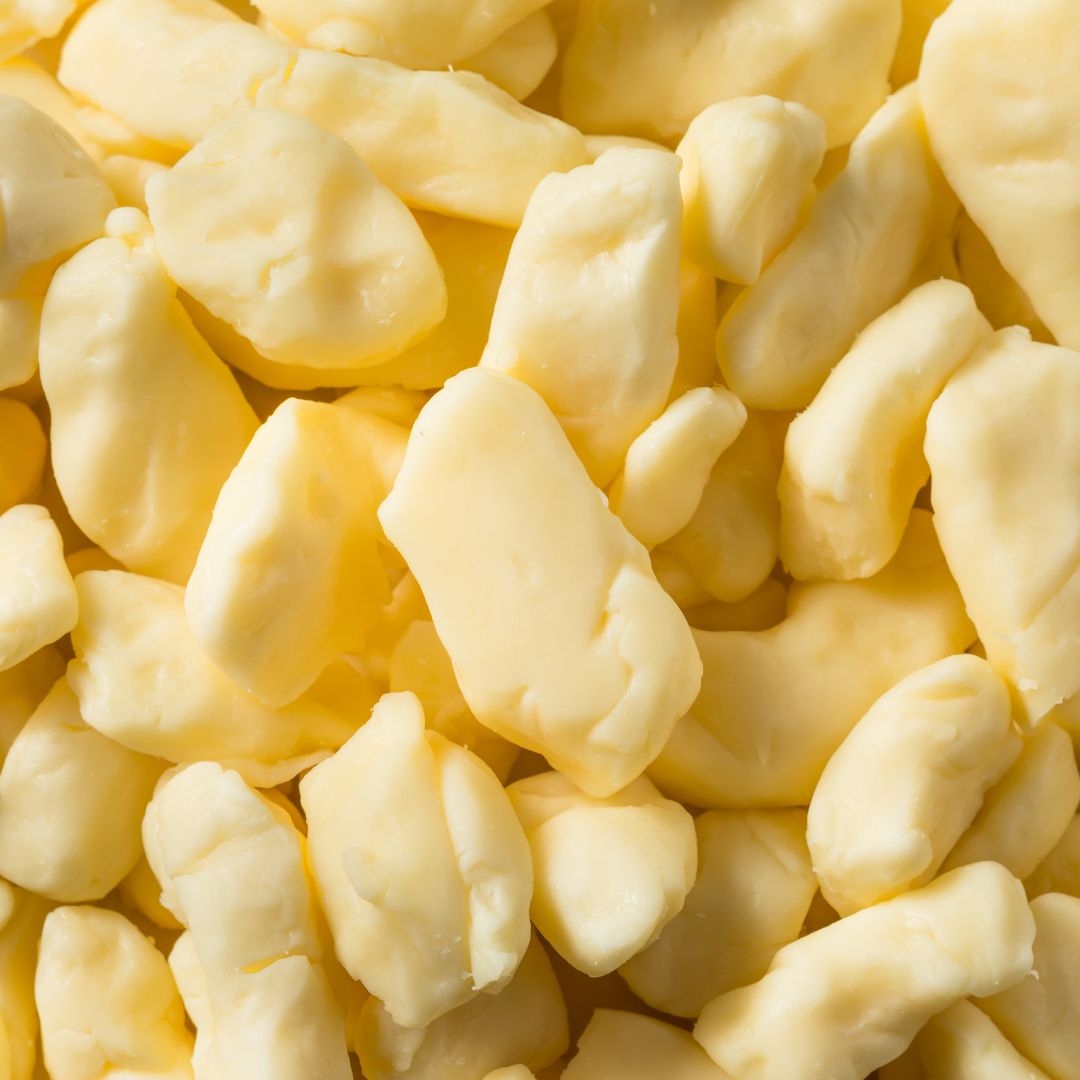
Considering Allergies and Restrictions
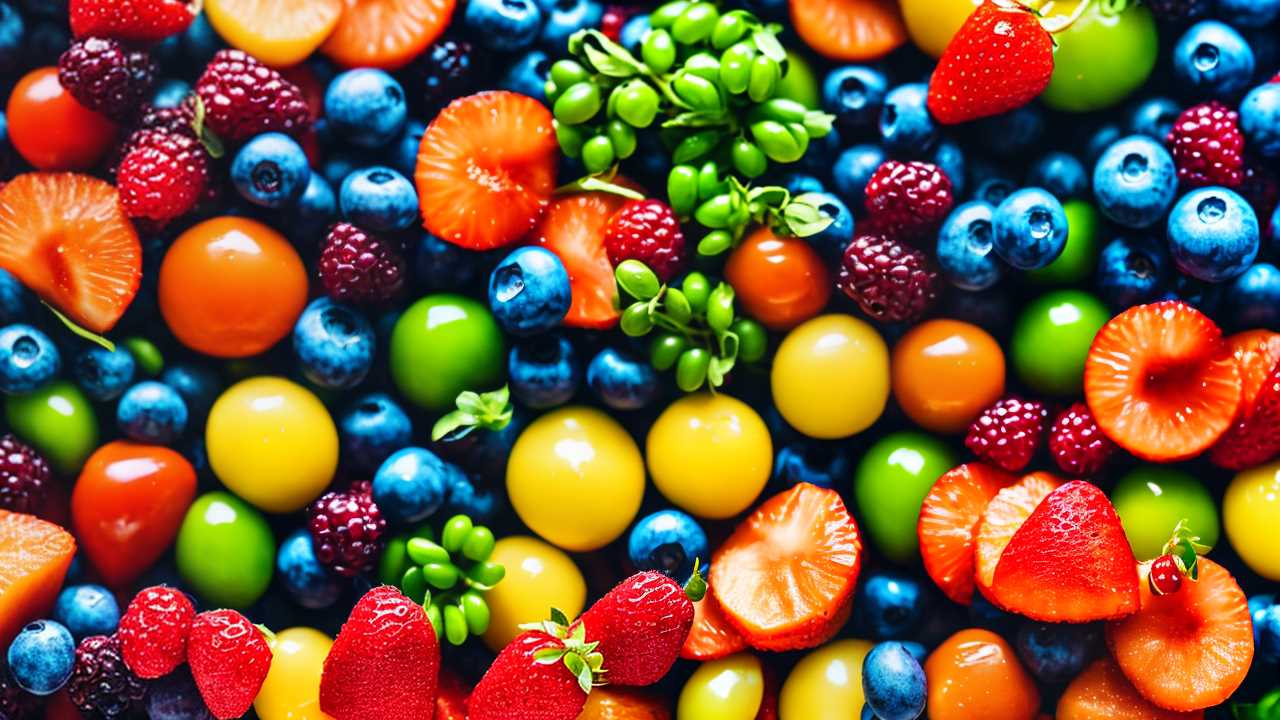
Many schools now have policies regarding allergens, so it's essential to consider these when packing your child's snacks. Understanding the needs and restrictions of not only your child but their peers is crucial. It's about creating a safe environment for everyone.
When you're selecting snacks, focus on allergy awareness. This means checking labels and being informed about the ingredients that are common triggers, such as nuts, dairy, eggs, and gluten. Ingredient labeling is your best tool here. Manufacturers are required to list potential allergens, but it's always wise to read the fine print. If a product says "may contain traces of nuts" or similar warnings, it's best to choose something else to ensure the safety of all children.
Think about alternative snack options that are naturally free from common allergens. Fruits and vegetables are excellent choices. Not only are they safe for most children, but they also provide essential nutrients and fiber, supporting overall health. Remember, the goal is to nourish while keeping safety in mind.
Additionally, for those looking to introduce a dairy snack that caters to health-conscious individuals, consider healthy cheese snack ideas like veggie-stuffed cheese wraps, which balance flavor and nutrition.
Lastly, consider the dietary requirements that may stem from medical, ethical, or religious reasons. Some children may have restrictions such as lactose intolerance or adhere to a vegan diet. Offering a variety of snacks can help accommodate these needs while promoting inclusivity.
Lastly, stay informed by communicating with your child's school. They might've updates or specific guidelines on what's acceptable. This open line of communication is key in fostering a community that cares and caters to the well-being of all its members.
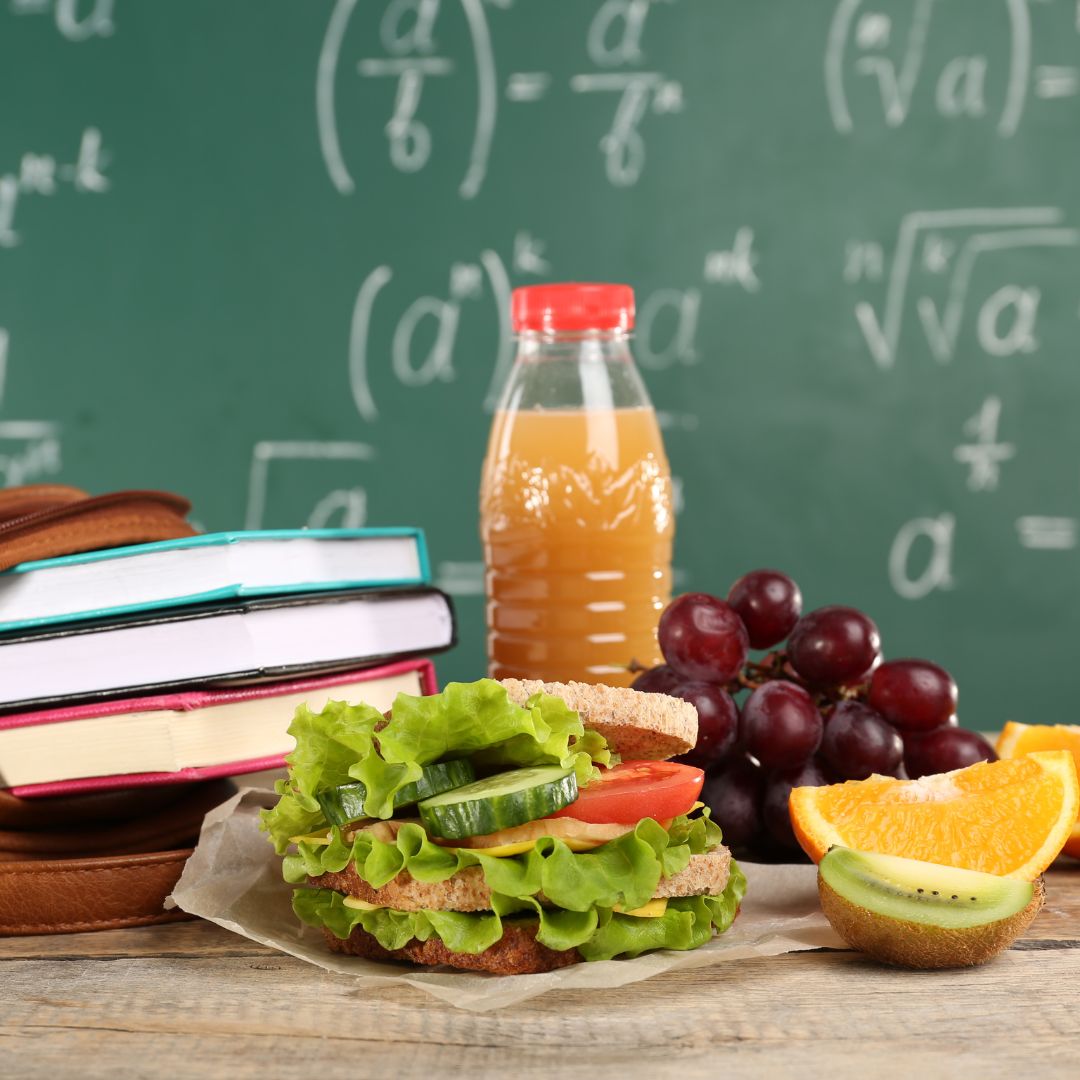
Easy and Quick Snack Ideas

Time-crunched mornings require easy, quick snack ideas that you can toss into your child's school bag. When you're balancing tight schedules, it's essential to have nutritious, simple options ready that will keep your child energized throughout the day.
Consider fruit combinations that are both delicious and healthful. A small container of mixed berries—strawberries, blueberries, and raspberries—offers a rich source of antioxidants, vitamins, and fibers. These not only support your child's immune system but also provide natural sugars for a quick energy boost.
Alternatively, apple slices paired with a small handful of grapes are easy to prepare and fun to eat. These fruits are packed with vitamins and hydration, essential for maintaining your child's concentration and hydration levels during school hours.
For a savory option, consider adding CheeseBall Bites to your child's snack box. Available in flavors like Smoked Bacon Gouda, these bites can be a delightful treat that's both tasty and filling.
Protein bites are another excellent choice. You can quickly whip up a batch of these nutrient-packed snacks over the weekend. Combine oats, honey, peanut butter (check your school's allergy policy first), and a sprinkle of chia seeds for a dose of Omega-3 fatty acids.
Not only are these bites filling, but they also help in sustaining energy levels, thanks to their protein and fiber content.
These snack options aren't just quick to prepare; they're also designed to offer the nutrients your child needs to stay active and attentive in school. By choosing these wholesome snacks, you're ensuring that your child is well-nourished and ready to face a day of learning and play.
Always remember, the right nutrients can help in fostering a healthy mind and body, keeping your child on the path to success.

Homemade Vs. Store-Bought Options
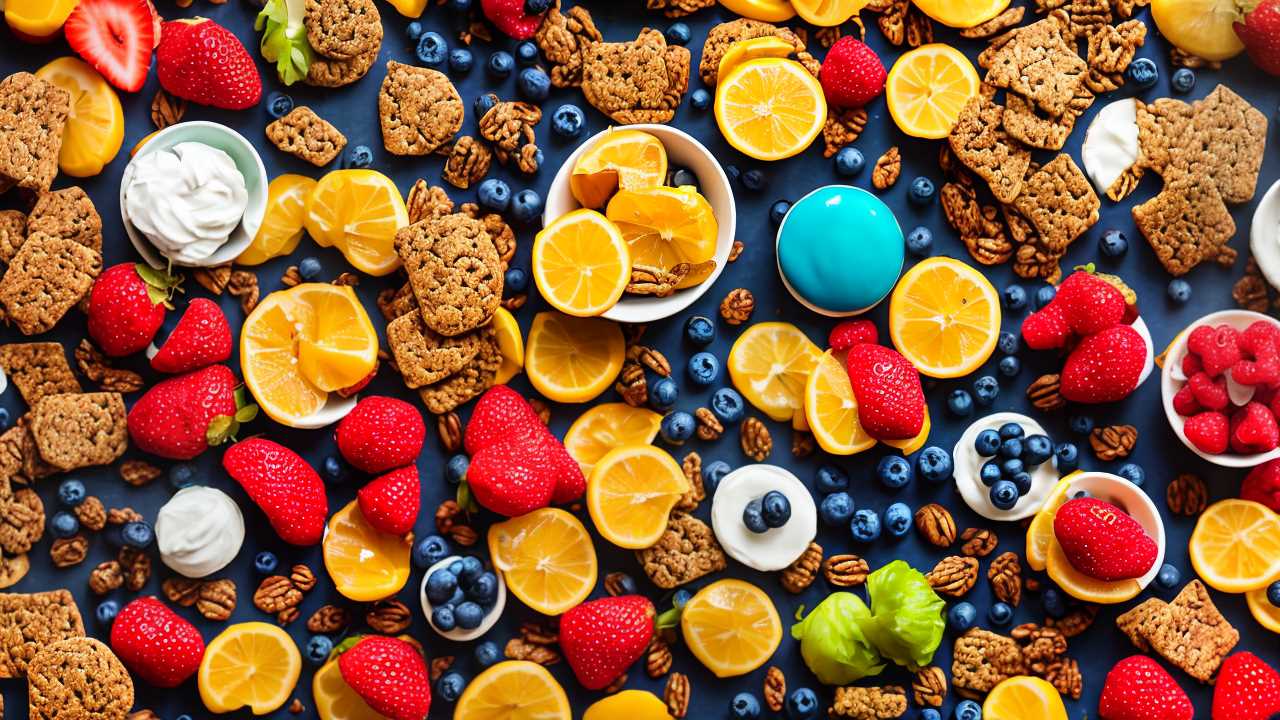
Deciding between homemade and store-bought snacks can significantly impact your child's health and nutrition. When you opt for homemade snacks, you're in full control of the ingredients. This means you can avoid excessive sugars, unhealthy fats, and unnecessary additives—common culprits in many commercially packaged snacks.
Moreover, preparing snacks at home allows you to incorporate whole, nutritious ingredients that support your child's overall health and energy levels throughout the school day.
On the other hand, store-bought options offer convenience and a broad flavor variety that can be a real draw, especially on busy mornings or when culinary creativity runs dry. Many brands now cater to health-conscious consumers, offering products with reduced sugar, no artificial flavors, and whole grain ingredients.
However, it's crucial to read labels carefully. Look for snacks with a short and understandable ingredient list and low in added sugars and sodium.
Packaging options also play a role in your decision. While homemade snacks might require more eco-friendly, reusable containers, store-bought snacks often come in single-use packaging, which can contribute to environmental waste.
If sustainability is a priority for you, consider how your snack choices impact not just your child's health but also the planet.
Ultimately, the choice between homemade and store-bought snacks doesn't have to be exclusive. Combining both, depending on your weekly schedule and nutritional goals, can provide the balance between convenience and customized nutrition.
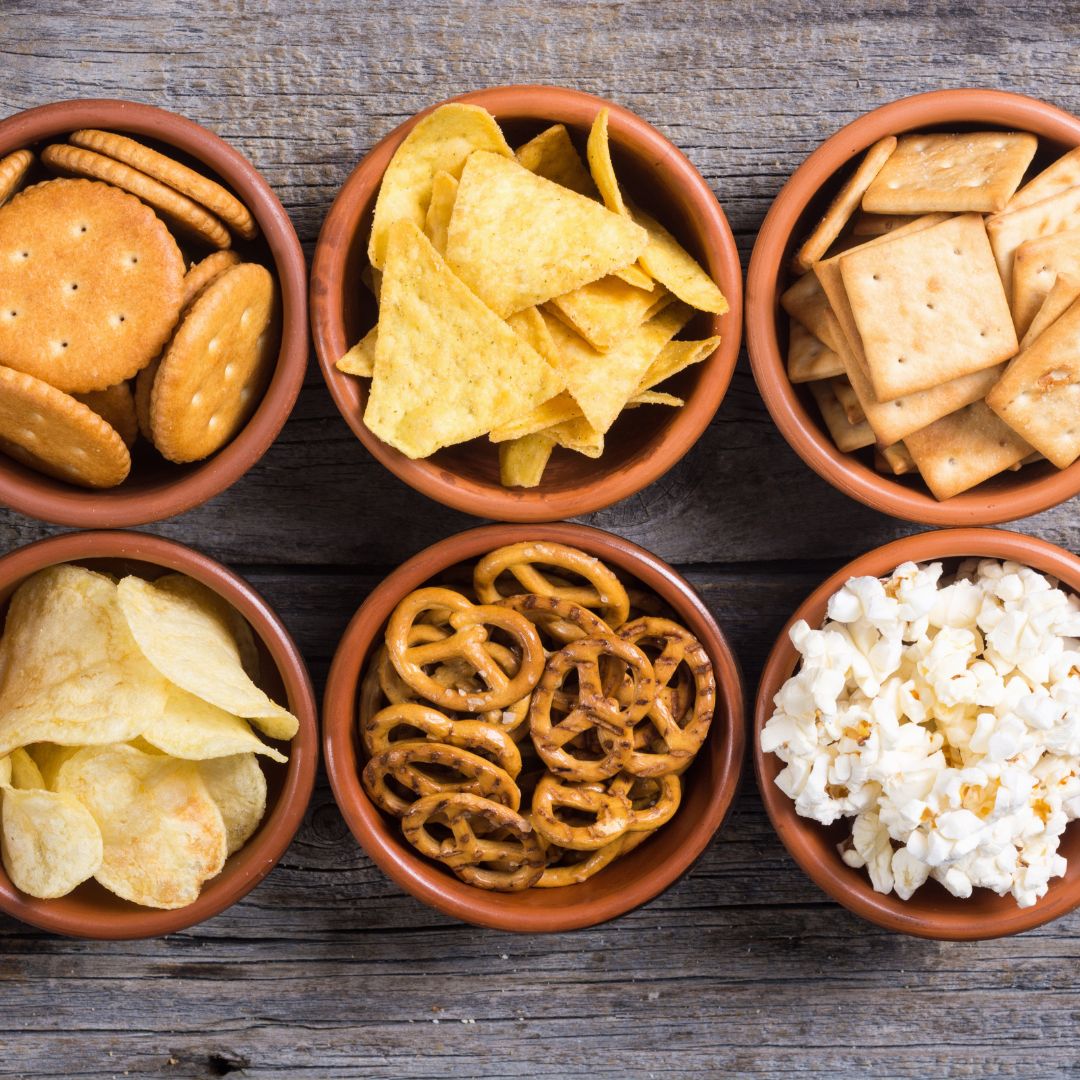
Seasonal Snack Suggestions

One can adapt snack choices to the changing seasons, ensuring freshness and nutritional optimization throughout the year. As you plan your child's school snacks, consider aligning with the bounty each season offers. This not only maximizes nutrient intake but also introduces children to the natural diversity of foods.
In spring, embrace the freshness of new beginnings with snacks like crisp sugar snap peas or refreshing cucumber slices. Pair these with a light hummus dip to add protein without overwhelming the palate. This season is all about light, growth-inspiring foods that reflect the renewal around us.
Come summer, focus on hydration and energy. Summer treats like chilled watermelon cubes, fresh berries, and homemade yogurt popsicles can be both refreshing and nourishing during hot school days. They're packed with antioxidants, vitamins, and fluids that help keep energy levels up and hydration in check.
As the leaves change, so can your snack offerings. Fall flavors are rich and comforting. Think mini apple slices with a sprinkle of cinnamon, or small pumpkin muffins made with whole grains. These snacks offer a blend of fiber, complex carbohydrates, and spices that support digestion and provide sustained energy.
Winter warmth in your child's snack box might look like roasted sweet potato wedges or small thermoses of vegetable soup. These aren't only heartwarming but also packed with vitamins A and C, which are crucial for immune support during the colder months.

Frequently Asked Questions
How Do I Keep Snacks Fresh Until Snack Time?
To keep your snacks fresh until it's time to eat, consider using airtight containers or zipper-seal bags for optimal snack storage.
These methods prevent air exposure and moisture, which can spoil food quickly.
Also, include an ice pack in your bag if the snacks are perishable.
Choosing whole grain, low-sugar options can also enhance the nutritional value of your snacks, aligning with a health-conscious approach to eating.
Are Dip Options Feasible for School Snacks?
You're in a pickle deciding if dip options are feasible for school snacks, aren't you? Well, they can be a hit!
Focus on nutritious dip pairings like hummus with veggies or yogurt with fruit. Keep portion sizes in check to avoid messes and ensure they're manageable for kids.
Opt for containers that seal tightly to maintain freshness and prevent spills. This approach not only promotes healthy eating but also serves your child's needs effectively.
What Is the Policy on Packaging Waste at Schools?
You need to check your school's policy on packaging waste, as many schools now prioritize waste reduction.
To align with these policies, consider using reusable containers for any items you bring. This not only supports the environment but also aligns with a health-conscious, nutrition-focused lifestyle by reducing exposure to potential toxins from disposable packaging.
Can Snacks Double as Educational Tools?
Absolutely, snacks can be more than just a treat; they can be a gateway to learning.
Imagine transforming snack time into a mini science lesson with educational recipes that explain the role of vitamins and minerals in snack nutrition.
By choosing foods that illustrate healthy eating principles, you're not only nourishing their bodies but also enriching their minds.
It's a delicious opportunity to serve up knowledge with every bite, making snack time both nutritious and enlightening.
How Often Should Snack Menus Be Rotated?
You should rotate snack menus regularly to maintain nutritional balance and keep interest alive.
Ideally, update your snack rotation every month, incorporating seasonal snacks that offer fresh, peak nutritional benefits. This approach not only supports local agriculture but also exposes everyone to a diverse array of vitamins and minerals critical for health.
Staying mindful of seasonal changes ensures you're providing the best for those you serve, enhancing both physical and educational outcomes.
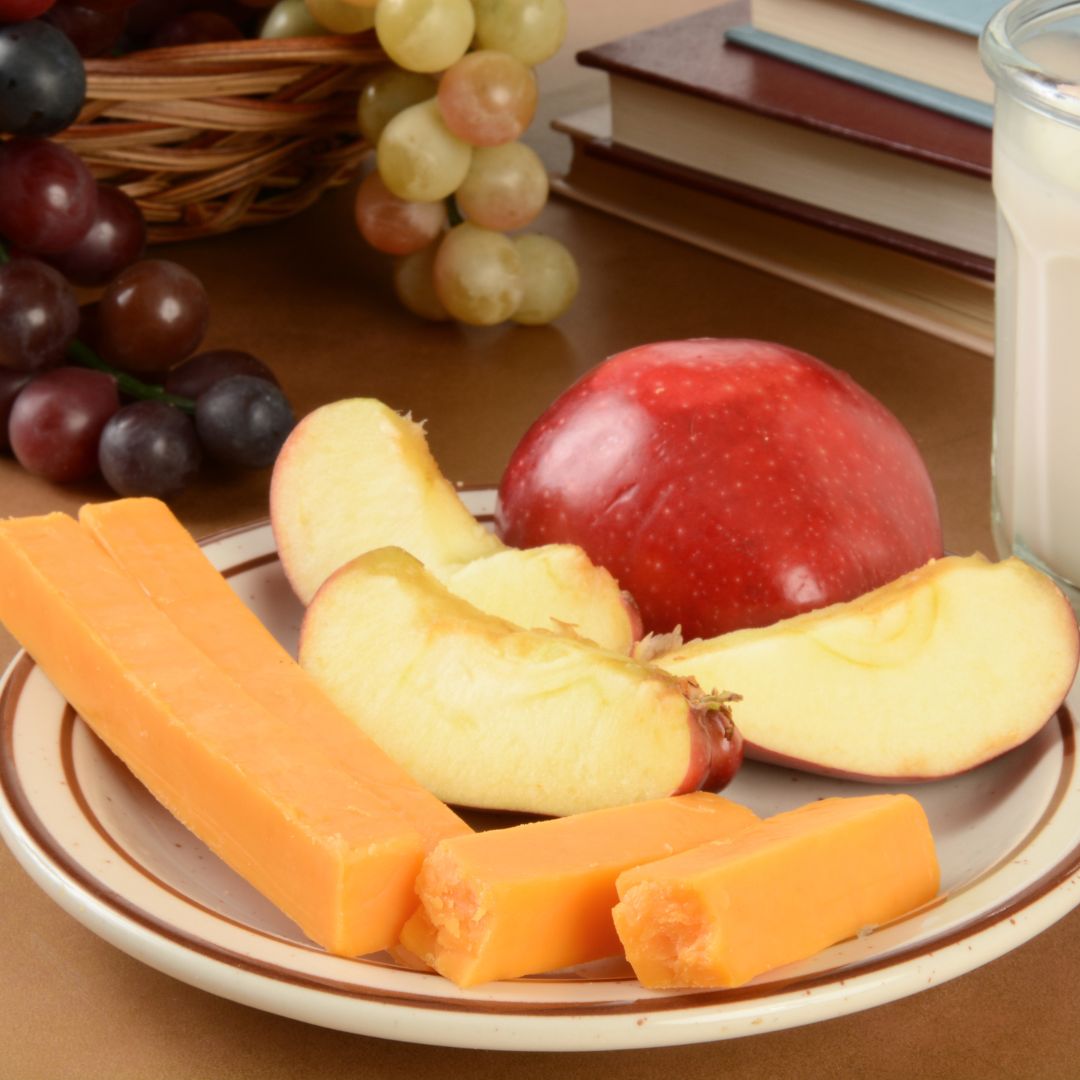
Conclusion
So, as you navigate the snack labyrinth, remember, it's not just about filling little bellies but nourishing future leaders. Opt for the garden's bounty over the factory's output and consider those special dietary landscapes. Seasonal treats often whisper the secrets of balance and vitality, subtly enhancing your child's daily adventure. By choosing wisely, you're not just packing a snack; you're fueling a journey. Let each bite be both a delight and a stepping stone to lifelong health.

_7.png)


